Opinion & Analysis
An interview with Jon Cavalier, amateur golf course photographer
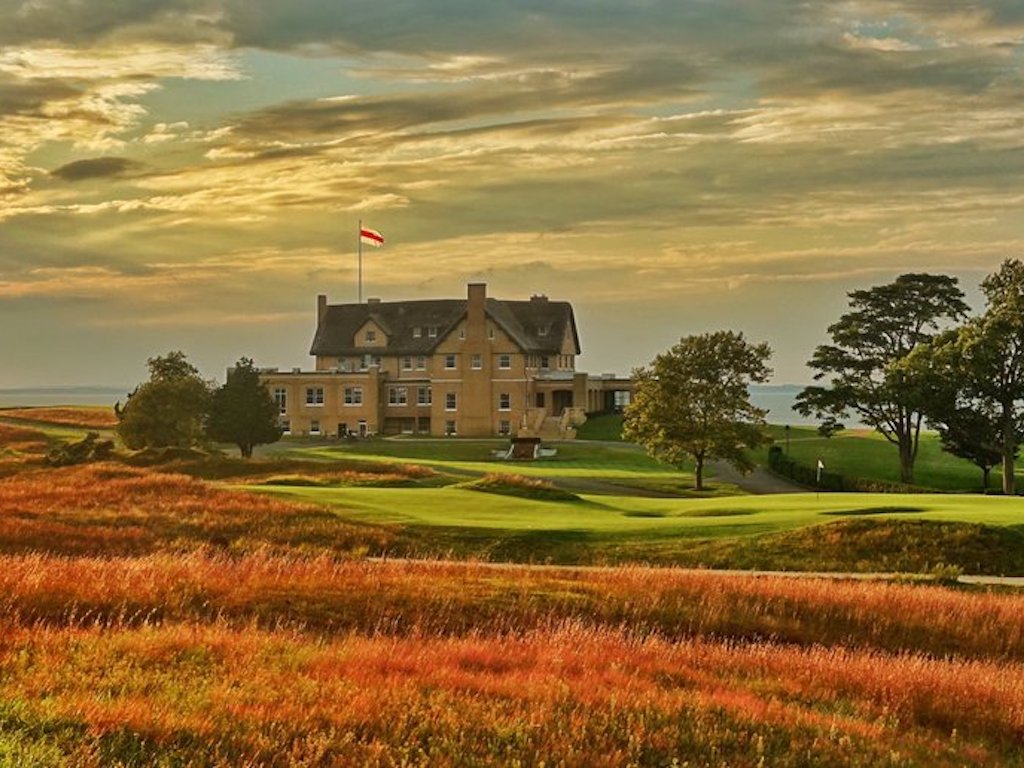
A congregation of golf course architecture aficionados gathers regularly on the internet, to preach the word of design. Their Stonehenge is a website called Golf Club Atlas, and when the denizens aren’t posting long-form pieces on golf course architecture history, they engage in smoldering debate on the origin, merit, and authenticity of architects, their decisions, and the outcome of those decisions. Members of the community often gather, site unseen, for events called the King’s Putter, the Midwest Mashie, and the Knockout. Their allegiance is unwavering, the stuff of legends, even when a match is on the line, or a favorite course’s origin is called into question.
Many on the site have money and the wherewithal to join, or travel to as guests, the world’s the great clubs. Many others do not, and garner knowledge through the descriptions of these sojourners. To the great benefit of all, members like Joseph Bausch (a Villanova University professor) and this writer (not a Villanova University professor) post their images for all to view.
More than any other, and in a brief period of time, Jon Cavalier has emerged as the lens witness to the glory of golf course architecture. Cavalier shoots more courses, with greater frequency, than one might think humanly possible. What exceeds belief, is that photography is not his career. Cavalier is a lawyer, based in Philadelphia. One of his passions is golf course architecture and its photography. Without him, golfers on Golf Club Atlas and Instagram and Twitter (where he post as @linksgems) would not have access to the Pine Valleys, the Cypress Points, and the Yeaman’s Halls of this country and the world. It is our pleasure to present this interview with him, along with a dozen of his favorite photos. If you don’t know the spots, enjoy their beauty and follow Mr. Cavalier on social media for a daily dosage.
1. How did you transition from just golfer to golfer and photographer?
I’ve been an avid golfer for about 20 years now. I picked the game up in college after aging out of traditional sports due to rapidly declining athleticism. I was hooked after my first round. At the same time, I’ve always had at least a passing interest in photography. And as best I can remember, I photographed a golf course for their website (I built the website too) back in 2002 or so. But for some reason, I never really combined the two until 2013 or so. As it happened, I was playing Somerset Hills on a gorgeous fall day and had a camera in the car – the fall colors were so beautiful that I decided to bring the camera out with me. Afterwards, I realized that I’d enjoyed taking the photos almost as much as I enjoyed playing the course. I’ve been doing both ever since.
2. Who inspired/motivated you to undertake golf course photography?
I’ve always been inspired by the top golf photographers — guys like Walter Iooss, Evan Schiller (@Evan_Schilller_Photography) and Jacob Sjoman (@sjomanart), and other talented guys like Ben Peters (@thegolfhawk) and Mike Gibbons (@gibbonsphoto). Beyond that, my biggest source of both inspiration and motivation is the people who like seeing my photos and who asked to see more, especially those on the GolfClubAtlas forum and those who follow me on social media. My wife, who had already been putting up with my full blown golf habit, has always encouraged the photography as well.
3. When did it transition from more than something fun, to something bigger?
That’s a great question, and I suppose the answer depends on what is meant by “something bigger.” As it stands, even now, I take and share golf photos because it’s fun and I enjoy doing it. Taking photos adds to my enjoyment of a round of golf, and sharing them has led to interactions with so many great people, many of whom I am fortunate to now call dear friends. If golf photography ever stopped being fun, I’d stop doing it.
4. Talk equipment for a moment-what camera and lens do you love, and what software do you use for editing?
I’ve been shooting mostly Sony cameras for the past few years, and I’m a big fan. My go-to is a Sony a7Riii mirrorless with either a Sony OSS 24-240 or a Sony 24-105 G OSS lens. This combo offers great versatility and photo quality, and is perfect for golf photography.
When I want something smaller, I use a pocket-sized Sony RX-100 MK6, which is a terrific camera for its size. I’ve used the RX-100 series since the MK3, and they are excellent.
Occasionally, I’ll shoot with a small Leica, a Fuji X100, or my iPhone X.
For the aerial photography, I’ve always used DJI Phantom drones. I’m currently using a Phantom 4 Pro 2.0, but I’ve used, crashed and/or given away every model of Phantom going back to the original. The photo and video quality has improved by leaps and bounds in the latest models.
5. You are a Golf Club Atlas participant. How did the discussion board of that site impact your growing enthusiasm for golf course photography?
Enormously, and in several different ways. First and most importantly, the GCA discussion board launched and nurtured my infatuation (and subsequent obsession) with golf course architecture. This led me to seek out golf courses that I otherwise might have ignored or about which I’d never have learned. I believe an understanding and appreciation of golf course architecture is essential for quality golf course photography, and there is no better resource for that than GCA.
Beyond that, the GCA forum was the first place I shared my photos. I believe the first photos I posted were from that round at Somerset Hills, and the response was overwhelmingly positive. The ability to share and subsequently discuss my photography and the subject course not only gave me an outlet for my shots, but it certainly encouraged me to take and share more. And the criticism helped me become a better photographer.
I similarly credit and appreciate Andy Johnson and Jason Way at The Fried Egg for the same reasons.
6. At what point did you incorporate drone photography into your arsenal, and how did that change your approach to a complete shoot?
I was a very early adopter of drone technology to take aerial photos of golf courses. It was clear to me right away that this tech was perfectly suited to shoot golf. I don’t know that having the ability to shoot aerials changed my approach to photographing golf courses much, but it certainly gave me the ability to see and shoot courses from a different and unique perspective.
7. What do drone and ground photography offer, that the other does not?
Drone photography offers two main benefits that you just can’t get from the ground. First, aerial photography gives the ability to capture the entire golf course and its surrounds in one frame. We have all seen and love those old photos of classic courses taken from a low-flying airplane. Drone photography allows a “zoomed out” perspective of the course, which can show the full routing, how the holes and hazards interconnect, and how the course interacts with its environment. Second, drones allow us to capture a course from an infinite number of angles and perspectives. Ground photography is fundamentally two-dimensional – there are only so many places to stand and take a photo. Drones allow us to place a camera almost anywhere in three-dimensional space, which in turn allows for unlimited creativity and perspective. These angles, which we would never otherwise see, can be really compelling.
The advantage of “regular” photography is that it shows the course from the perspective of the golfer – the perspective we’re used to seeing. And so it’s ideal for taking shots that “transport” the viewer to the course.
For me, the ideal way to capture a course is through a mix of both forms.
8. Which golf course has given you the greatest artistic experience in shooting?
That’s a tough question. The courses I most enjoy shooting tend to be the courses that have both compelling visuals and extremely interesting golf architecture. So the top of the list, you’d certainly find courses like National Golf Links of America, Sleepy Hollow, Cypress Point, Fishers Island, Shinnecock Hills, Eastward Ho, Maidstone, Monterey Peninsula CC and Sand Hills. These are all courses that are quite beautiful by any definition and are also outstanding examples of brilliant golf course design.
At the same time, I also really enjoy the challenge of photographing courses that lack ocean or mountain views and thus may not be considered traditionally beautiful by everyone, but that are excellent from an architecture standpoint – courses like Chicago Golf Club or Oakmont. After all, it’s hard to take a bad photo of a place next to the ocean like MPCC, but doing justice to the quality of the course at a place that doesn’t have the visuals to fall back on is very satisfying.
9. Is there a golf course that you have yet to shoot, that you would like to?
Too many to count. It’s certainly a fantasy to shoot (and play) Augusta National. Beyond that, it’s all international courses: The Old Course, North Berwick, Royal County Down, Dornoch, Portrush, Ballybunion, Lahinch and countless others in the UK, and Royal Melbourne, Kingston Heath, Tara Iti, Barnbougle Dunes, Cape Kidnappers, Jack’s Point, Cape Wickham, Kauri Cliffs and many others in Australia and New Zealand. I’d also love to shoot Morfontaine in France – from what I’ve seen, it looks amazing.
10. BONUS QUESTION: What question haven’t we asked, that you wish we would? Ask it and answer it please. Thank you for your time.
What is the best thing that has come from your golf course photography?
As I mentioned above, I’ve met so many wonderful people as a result of my photography, and I’ve been able to see some of the best golf courses in the world. But even better still, thanks to the incredibly loyal and supportive people who follow me on twitter and Instagram, I’ve been able to financially support some charities that are important to my wife and me. For the last two years, I’ve sold a photo calendar that has enabled donations of over $15,000 to Woodstock Farm Sanctuary. Just recently, thanks to the work of my good friend Tyler Petrovich (@thetravellinggolfer), we auctioned off a glass print of Pebble Beach and raised almost $1500 for SLC6A1 Connect and Milestnes for Maxwell. It’s been truly gratifying to be able to use an avocation that I enjoy to support those who need a bit of a hand, and we’re always looking for new ways to do more of it.
Opinion & Analysis
The 2 primary challenges golf equipment companies face

As the editor-in-chief of this website and an observer of the GolfWRX forums and other online golf equipment discourse for over a decade, I’m pretty well attuned to the grunts and grumbles of a significant portion of the golf equipment purchasing spectrum. And before you accuse me of lording above all in some digital ivory tower, I’d like to offer that I worked at golf courses (public and private) for years prior to picking up my pen, so I’m well-versed in the non-degenerate golf equipment consumers out there. I touched (green)grass (retail)!
Complaints about the ills of and related to the OEMs usually follow some version of: Product cycles are too short for real innovation, tour equipment isn’t the same as retail (which is largely not true, by the way), too much is invested in marketing and not enough in R&D, top staffer X hasn’t even put the new driver in play, so it’s obviously not superior to the previous generation, prices are too high, and on and on.
Without digging into the merits of any of these claims, which I believe are mostly red herrings, I’d like to bring into view of our rangefinder what I believe to be the two primary difficulties golf equipment companies face.
One: As Terry Koehler, back when he was the CEO of Ben Hogan, told me at the time of the Ft Worth irons launch, if you can’t regularly hit the golf ball in a coin-sized area in the middle of the face, there’s not a ton that iron technology can do for you. Now, this is less true now with respect to irons than when he said it, and is less and less true by degrees as the clubs get larger (utilities, fairways, hybrids, drivers), but there remains a great deal of golf equipment truth in that statement. Think about it — which is to say, in TL;DR fashion, get lessons from a qualified instructor who will teach you about the fundamentals of repeatable impact and how the golf swing works, not just offer band-aid fixes. If you can’t repeatably deliver the golf club to the golf ball in something resembling the manner it was designed for, how can you expect to be getting the most out of the club — put another way, the maximum value from your investment?
Similarly, game improvement equipment can only improve your game if you game it. In other words, get fit for the clubs you ought to be playing rather than filling the bag with the ones you wish you could hit or used to be able to hit. Of course, don’t do this if you don’t care about performance and just want to hit a forged blade while playing off an 18 handicap. That’s absolutely fine. There were plenty of members in clubs back in the day playing Hogan Apex or Mizuno MP-32 irons who had no business doing so from a ballstriking standpoint, but they enjoyed their look, feel, and complementary qualities to their Gatsby hats and cashmere sweaters. Do what brings you a measure of joy in this maddening game.
Now, the second issue. This is not a plea for non-conforming equipment; rather, it is a statement of fact. USGA/R&A limits on every facet of golf equipment are detrimental to golf equipment manufacturers. Sure, you know this, but do you think about it as it applies to almost every element of equipment? A 500cc driver would be inherently more forgiving than a 460cc, as one with a COR measurement in excess of 0.83. 50-inch shafts. Box grooves. And on and on.
Would fewer regulations be objectively bad for the game? Would this erode its soul? Fortunately, that’s beside the point of this exercise, which is merely to point out the facts. The fact, in this case, is that equipment restrictions and regulations are the slaughterbench of an abundance of innovation in the golf equipment space. Is this for the best? Well, now I’ve asked the question twice and might as well give a partial response, I guess my answer to that would be, “It depends on what type of golf you’re playing and who you’re playing it with.”
For my part, I don’t mind embarrassing myself with vintage blades and persimmons chasing after the quasi-spiritual elevation of a well-struck shot, but that’s just me. Plenty of folks don’t give a damn if their grooves are conforming. Plenty of folks think the folks in Liberty Corner ought to add a prison to the museum for such offences. And those are just a few of the considerations for the amateur game — which doesn’t get inside the gallery ropes of the pro game…
Different strokes in the game of golf, in my humble opinion.
Anyway, I believe equipment company engineers are genuinely trying to build better equipment year over year. The marketing departments are trying to find ways to make this equipment appeal to the broadest segment of the golf market possible. All of this against (1) the backdrop of — at least for now — firm product cycles. And golfers who, with their ~15 average handicap (men), for the most part, are not striping the golf ball like Tiger in his prime and seem to have less and less time year over year to practice and improve. (2) Regulations that massively restrict what they’re able to do…
That’s the landscape as I see it and the real headwinds for golf equipment companies. No doubt, there’s more I haven’t considered, but I think the previous is a better — and better faith — point of departure when formulating any serious commentary on the golf equipment world than some of the more cynical and conspiratorial takes I hear.
Agree? Disagree? Think I’m worthy of an Adam Hadwin-esque security guard tackle? Let me know in the comments.
@golfoncbs The infamous Adam Hadwin tackle ? #golf #fyp #canada #pgatour #adamhadwin ? Ghibli-style nostalgic waltz – MaSssuguMusic
Podcasts
Fore Love of Golf: Introducing a new club concept

Episode #16 brings us Cliff McKinney. Cliff is the founder of Old Charlie Golf Club, a new club, and concept, to be built in the Florida panhandle. The model is quite interesting and aims to make great, private golf more affordable. We hope you enjoy the show!
Opinion & Analysis
On Scottie Scheffler wondering ‘What’s the point of winning?’

Last week, I came across a reel from BBC Sport on Instagram featuring Scottie Scheffler speaking to the media ahead of The Open at Royal Portrush. In it, he shared that he often wonders what the point is of wanting to win tournaments so badly — especially when he knows, deep down, that it doesn’t lead to a truly fulfilling life.
View this post on Instagram
“Is it great to be able to win tournaments and to accomplish the things I have in the game of golf? Yeah, it brings tears to my eyes just to think about it because I’ve literally worked my entire life to be good at this sport,” Scheffler said. “To have that kind of sense of accomplishment, I think, is a pretty cool feeling. To get to live out your dreams is very special, but at the end of the day, I’m not out here to inspire the next generation of golfers. I’m not out here to inspire someone to be the best player in the world, because what’s the point?”
Ironically — or perhaps perfectly — he went on to win the claret jug.
That question — what’s the point of winning? — cuts straight to the heart of the human journey.
As someone who’s spent over two decades in the trenches of professional golf, and in deep study of the mental, emotional, and spiritual dimensions of the game, I see Scottie’s inner conflict as a sign of soul evolution in motion.
I came to golf late. I wasn’t a junior standout or college All-American. At 27, I left a steady corporate job to see if I could be on the PGA Tour starting as a 14-handicap, average-length hitter. Over the years, my journey has been defined less by trophies and more by the relentless effort to navigate the deeply inequitable and gated system of professional golf — an effort that ultimately turned inward and helped me evolve as both a golfer and a person.
One perspective that helped me make sense of this inner dissonance around competition and our culture’s tendency to overvalue winning is the idea of soul evolution.
The University of Virginia’s Division of Perceptual Studies has done extensive research on reincarnation, and Netflix’s Surviving Death (Episode 6) explores the topic, too. Whether you take it literally or metaphorically, the idea that we’re on a long arc of growth — from beginner to sage elder — offers a profound perspective.
If you accept the premise literally, then terms like “young soul” and “old soul” start to hold meaning. However, even if we set the word “soul” aside, it’s easy to see that different levels of life experience produce different worldviews.
Newer souls — or people in earlier stages of their development — may be curious and kind but still lack discernment or depth. There is a naivety, and they don’t yet question as deeply, tending to see things in black and white, partly because certainty feels safer than confronting the unknown.
As we gain more experience, we begin to experiment. We test limits. We chase extreme external goals — sometimes at the expense of health, relationships, or inner peace — still operating from hunger, ambition, and the fragility of the ego.
It’s a necessary stage, but often a turbulent and unfulfilling one.
David Duval fell off the map after reaching World No. 1. Bubba Watson had his own “Is this it?” moment with his caddie, Ted Scott, after winning the Masters.
In Aaron Rodgers: Enigma, reflecting on his 2011 Super Bowl win, Rodgers said:
“Now I’ve accomplished the only thing that I really, really wanted to do in my life. Now what? I was like, ‘Did I aim at the wrong thing? Did I spend too much time thinking about stuff that ultimately doesn’t give you true happiness?’”
Jim Carrey once said, “I think everybody should get rich and famous and do everything they ever dreamed of so they can see that it’s not the answer.”
Eventually, though, something shifts.
We begin to see in shades of gray. Winning, dominating, accumulating—these pursuits lose their shine. The rewards feel more fleeting. Living in a constant state of fight-or-flight makes us feel alive, yes, but not happy and joyful.
Compassion begins to replace ambition. Love, presence, and gratitude become more fulfilling than status, profits, or trophies. We crave balance over burnout. Collaboration over competition. Meaning over metrics.
Interestingly, if we zoom out, we can apply this same model to nations and cultures. Countries, like people, have a collective “soul stage” made up of the individuals within them.
Take the United States, for example. I’d place it as a mid-level soul: highly competitive and deeply driven, but still learning emotional maturity. Still uncomfortable with nuance. Still believing that more is always better. Despite its global wins, the U.S. currently ranks just 23rd in happiness (as of 2025). You might liken it to a gifted teenager—bold, eager, and ambitious, but angsty and still figuring out how to live well and in balance. As much as a parent wants to protect their child, sometimes the child has to make their own mistakes to truly grow.
So when Scottie Scheffler wonders what the point of winning is, I don’t see someone losing strength.
I see someone evolving.
He’s beginning to look beyond the leaderboard. Beyond metrics of success that carry a lower vibration. And yet, in a poetic twist, Scheffler did go on to win The Open. But that only reinforces the point: even at the pinnacle, the question remains. And if more of us in the golf and sports world — and in U.S. culture at large — started asking similar questions, we might discover that the more meaningful trophy isn’t about accumulating or beating others at all costs.
It’s about awakening and evolving to something more than winning could ever promise.

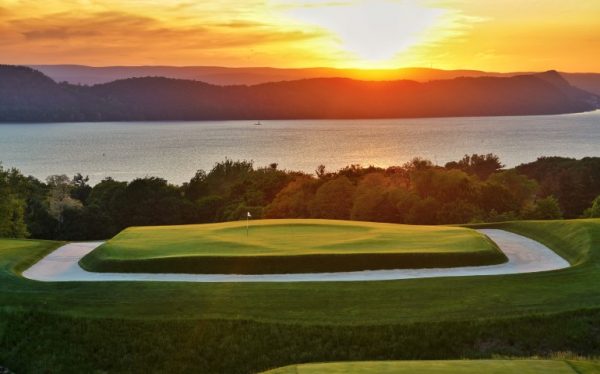
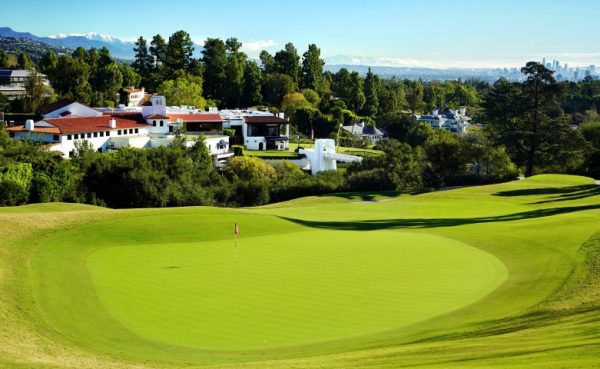
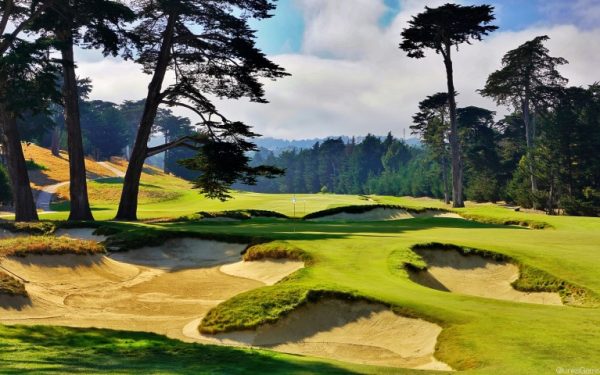
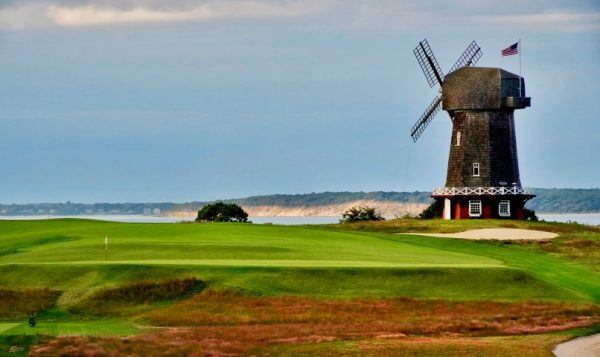
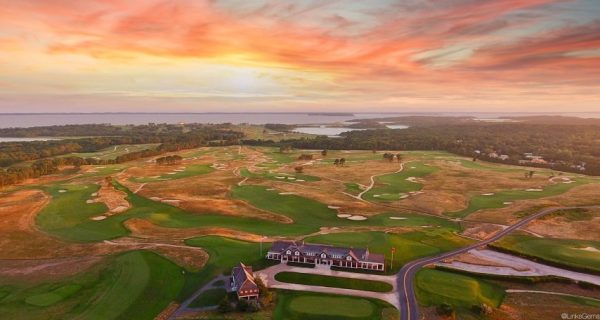
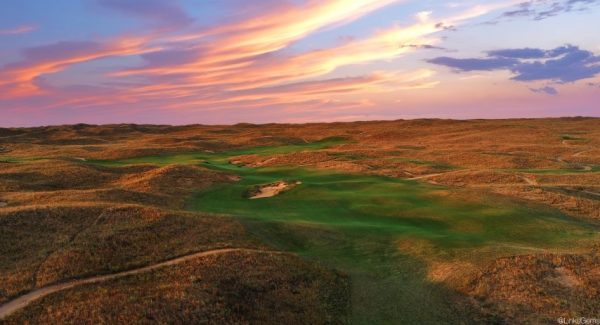
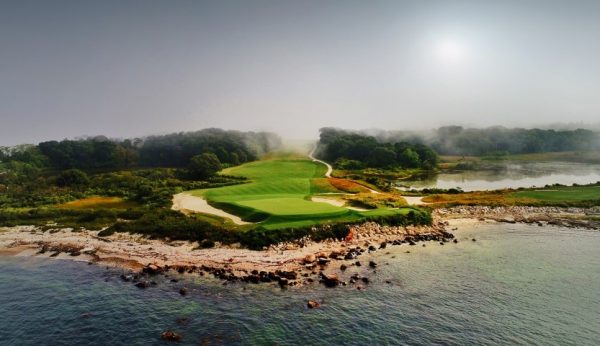
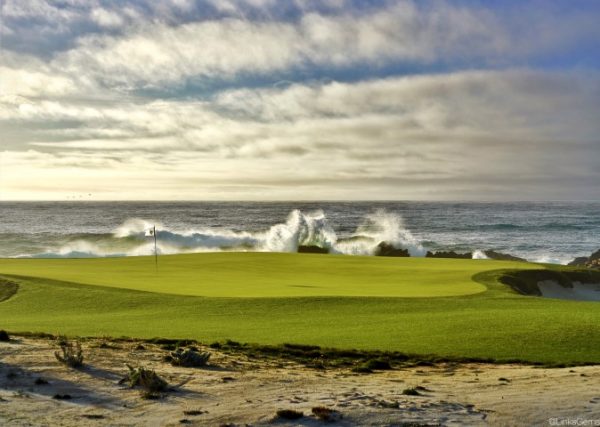

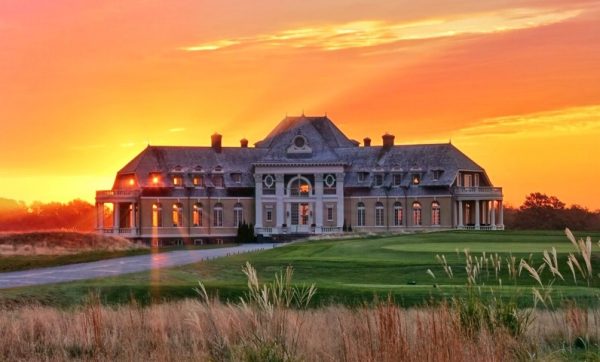

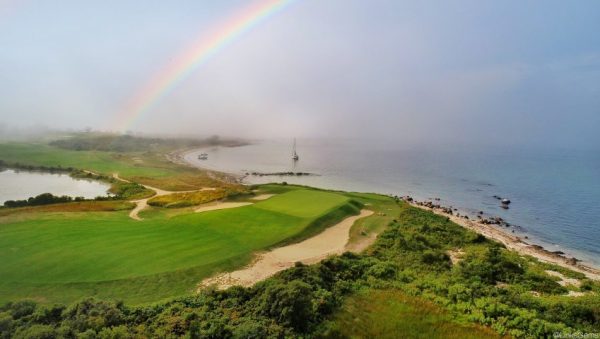



















gunmetal
Apr 2, 2019 at 10:21 am
As a fellow golfer and Landscape photographer, the post processing is a bit heavy handed for my taste but some of the compositions are wonderful. Really great shots and a very cool article and interview.
Ronald Montesano
Apr 5, 2019 at 6:21 am
What would you have differently? Asking sincerely for a friend. Thanks for your thoughts.
rm
Steve
Apr 1, 2019 at 5:46 pm
Enjoyed the interview Ron, very informative, especially having the Bonus Question finish!
Ronald Montesano
Apr 5, 2019 at 6:22 am
Thank you, Steve. The bonus question is always a favorite of mine. Interviewers mull which questions to ask, but invariably miss one. It is usually the favorite of most readers as well!
rm